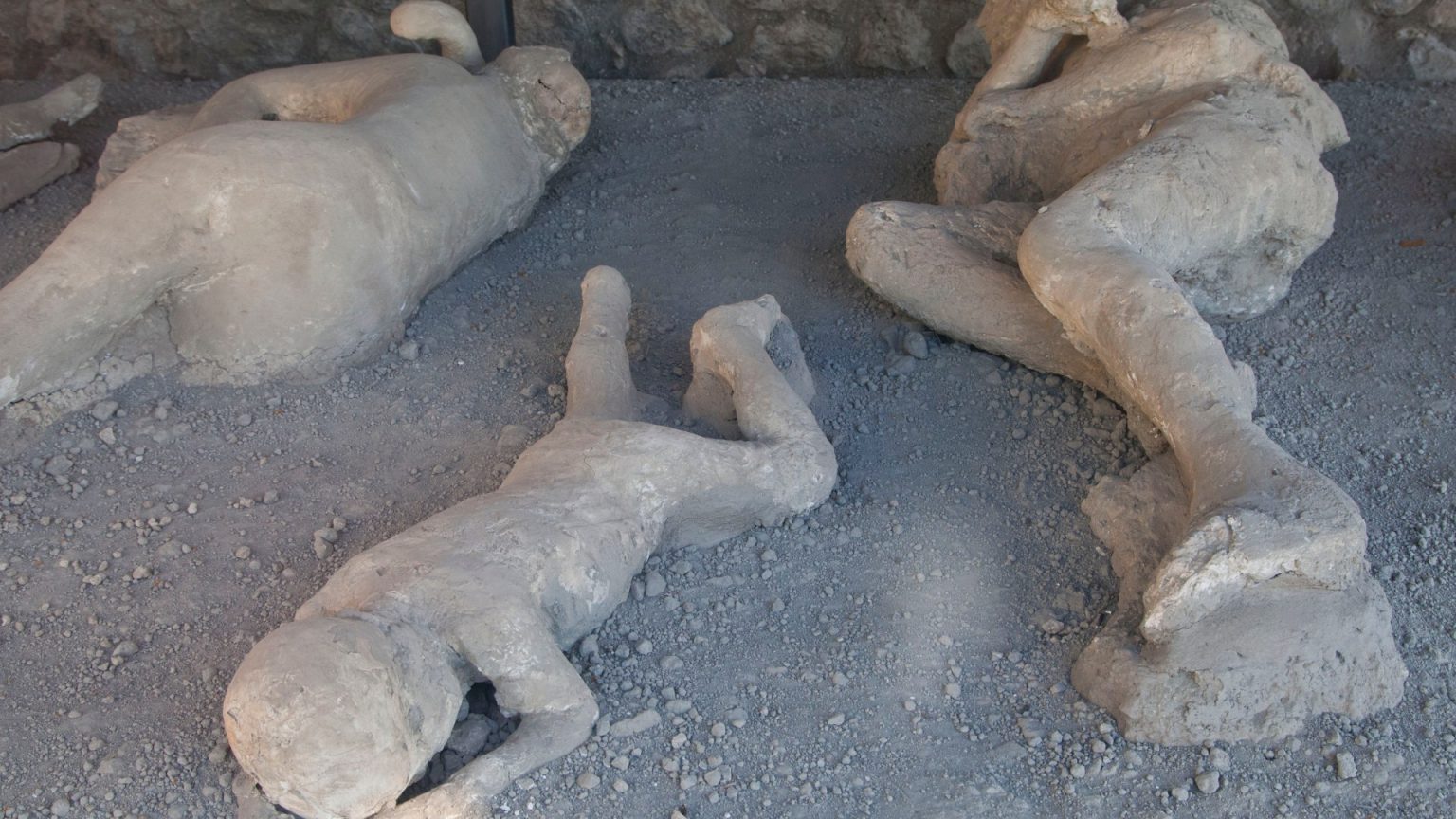The eruption of Mount Vesuvius in 79 AD, one of history’s deadliest volcanic events, entombed the Roman city of Pompeii and its surrounding areas under a blanket of ash and pumice, claiming the lives of an estimated 16,000 people. Recent research, meticulously reconstructing the eruption’s timeline, reveals a harrowing 32-hour period of escalating devastation, offering a chilling glimpse into the final moments of Pompeii’s inhabitants.
The eruption commenced around noon on August 24th, initially marked by a massive eruption column of rock fragments and gas that billowed into the sky. By 2 PM, the volcano began to unleash a torrential downpour of pumice, some pieces as large as nine feet across, burying buildings and streets under a thick, suffocating layer. This pumice fall, though terrifying, was not immediately lethal, giving residents a crucial, albeit shrinking, window of opportunity to escape. Fear and uncertainty, however, likely paralyzed many, keeping them rooted in place.
The true horror unfolded five hours later, at approximately 7:06 PM, with the arrival of the first pyroclastic current. These devastating surges of scorching hot gas and volcanic debris raced down the slopes of Vesuvius at speeds exceeding 124 mph, instantly vaporizing those in their path. The intense heat even vitrified human tissue, transforming it into glass. These pyroclastic flows continued intermittently throughout the night and into the next day, offering brief respites of deceptive calm between waves of incandescent destruction.
Dawn on August 25th brought no solace. At 7:07 AM, the volcano unleashed its deadliest pyroclastic current, a colossal surge of searing debris that stretched 15 miles across. For nine agonizing hours, this lethal cloud engulfed Pompeii, obliterating any remaining vestiges of life. The sheer scale and intensity of this flow left no chance for survival, solidifying the city’s tragic fate.
The eruption continued to evolve, becoming even more explosive as the volcano interacted with groundwater. By 4 PM, a finer, more widespread pyroclastic flow extended 15 miles from the crater, devoid of human remains, suggesting the grim reality that few, if any, residents had survived the earlier onslaughts. Finally, after over 30 hours of relentless fury, the eruption ceased at 8:05 PM. Even if, by some miracle, anyone had endured the volcanic onslaught, a subsequent earthquake, as revealed by another study, likely delivered the final, fatal blow.
This new research underscores the agonizing dilemma faced by Pompeii’s residents. A five-hour window existed between the initial pumice fall and the first pyroclastic flow, offering a potential escape route. However, the fear of navigating the treacherous, debris-strewn landscape likely deterred many from fleeing. The preserved remains, encased in ash, provide a haunting testament to their final moments, frozen in time. The voids left by the decayed bodies, later filled with plaster, create chillingly lifelike casts, capturing the terror and desperation of those caught in the volcano’s unforgiving embrace.
The eruption’s timeline, extended from the previously estimated 19 hours to a full 32 hours, paints a more comprehensive picture of the unfolding catastrophe. Pliny the Younger, a Roman administrator and eyewitness to the eruption, provided a vivid account in a series of letters, describing the ominous umbrella-shaped cloud that loomed over Vesuvius – the telltale sign of the eruption column. His writings offer invaluable insights into this historic event, adding a human dimension to the scientific data. Mount Vesuvius, still active today, remains a potent reminder of the devastating power of nature and serves as a stark warning of the potential for future eruptions. The tragic fate of Pompeii underscores the importance of understanding volcanic processes and the need for effective evacuation plans in vulnerable areas.











